
Just before sunset, I found myself alone in the woods in Takayama, standing before snow-dusted torii gates as the last light of the day filtered through the trembling pines. I listened for sounds of life and heard nothing. I tried to smell the cedars, but their scent was masked by the sake still in my throat.
The Hie Shrine was at the foot of wooded hills where black bears roam, a 30-minute hike from where I had just been in the Sanmachi-suji district, Takayama’s picturesque old town. On the bus ride from Kanazawa, I had read up on the shrine’s spring festival, when elaborate yatai (floats) are pulled out of storage and paraded through town. It was the tail end of winter. No floats were coming. Neither were other travellers. Even the devout had already said their prayers and ventured home.

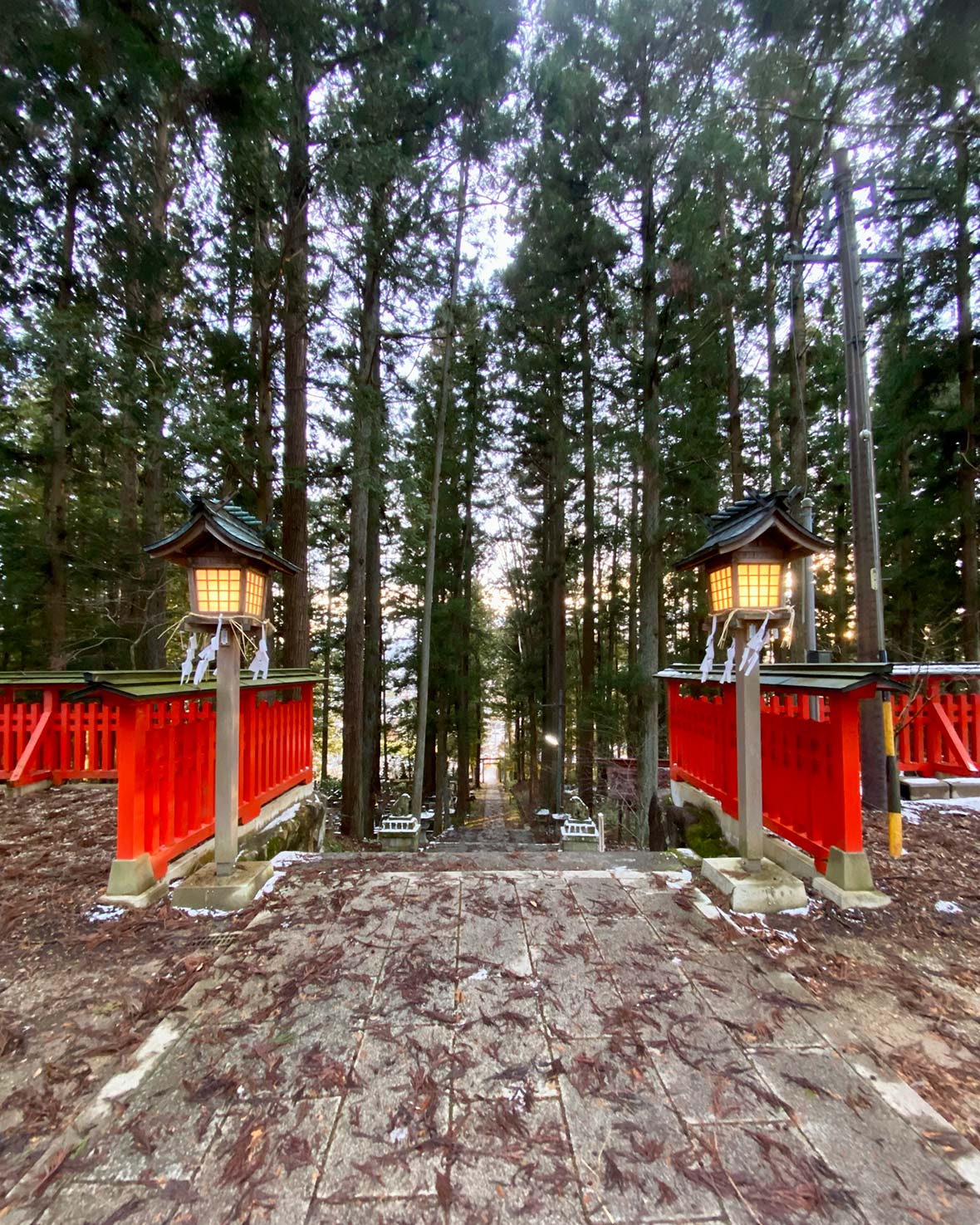
But after downing sake all afternoon, I decided I needed to be here, among the trees, the land, andthe kami—the divine entities that take the form of elements and concepts central to life, from wind and water to fertility and fortune, according to Shinto beliefs. Paying respect to Takayama’s forest spirits seemed appropriate after having spent so much time honoring its gods of rice and koji.
Takayama is a quaint town of timber buildings and traditions. Insulated between 3,000-meter peaks in the Japanese Alps, it has always had a special connection to the surrounding mountains and forests. For more than 1,000 years, it has supplied Japan with high-quality wood and craftsmen. Before Japan’s feudal era, citizens here, in the Hida region in modern-day Gifu Prefecture, were exempt from taxes, which were typically paid in rice. Instead, they were allowed to work as carpenters to pay for their duties.
The jagged peaks and dense forests have had another benefit: Takayama largely escaped the pillaging of the feudal era and the utter ruin of more recent wars. While fires have always been a menace, the townspeople always rebuilt after blazes burned down their homes and shops.

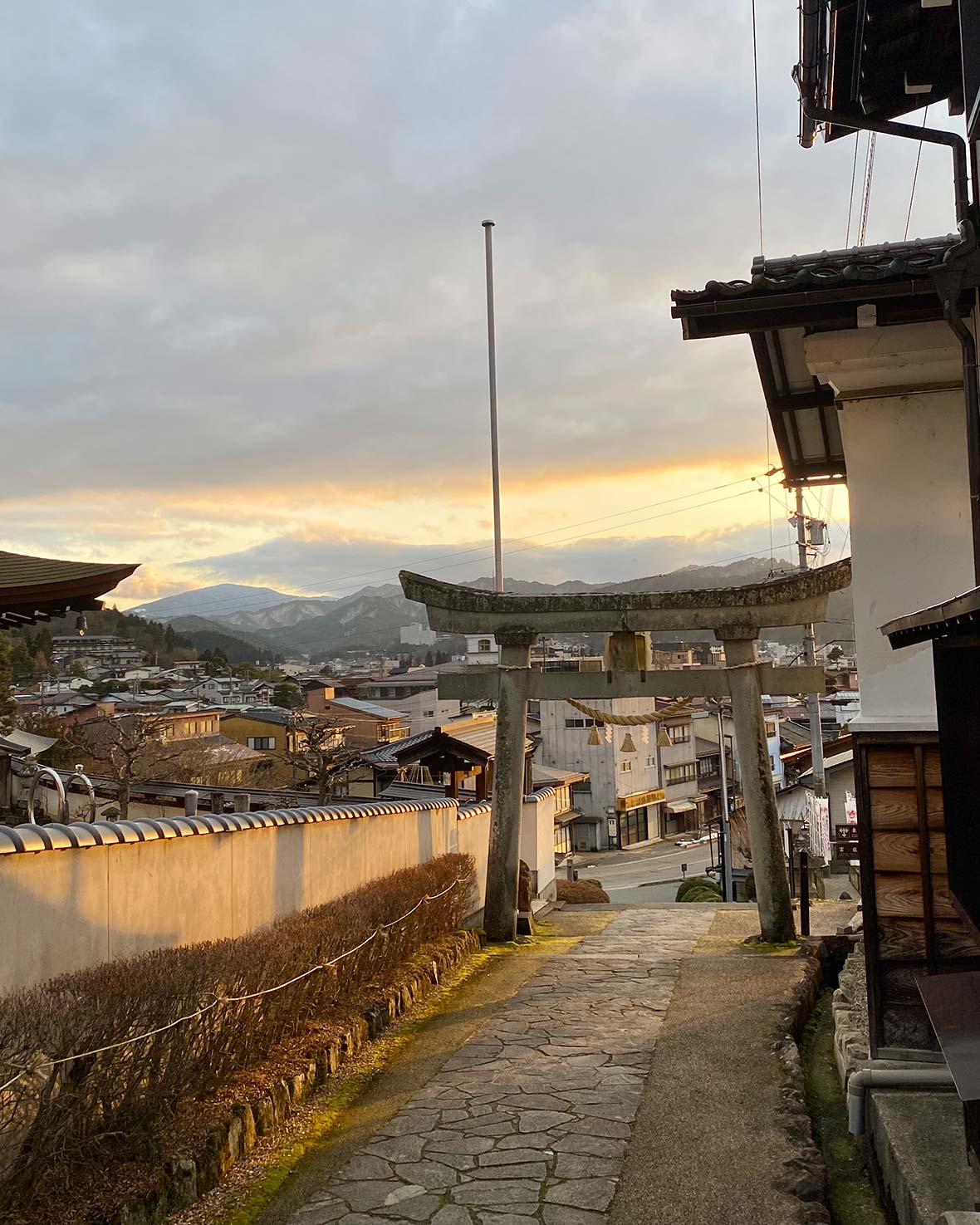
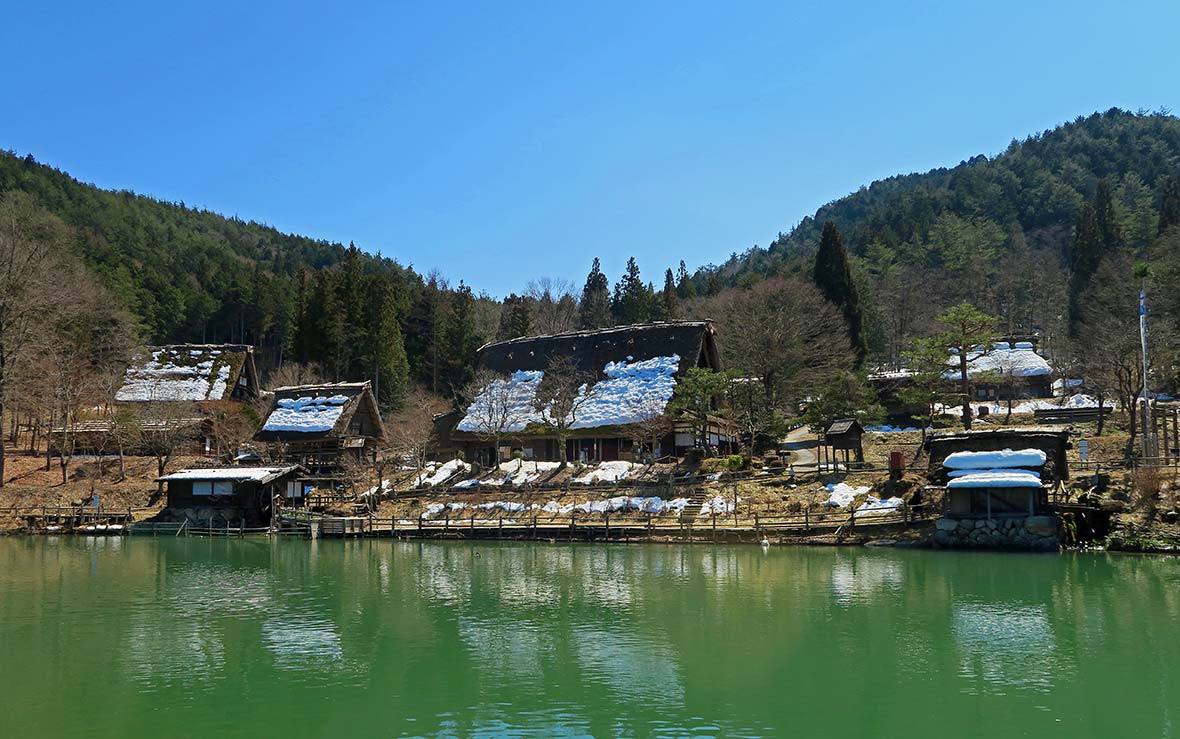

Today, Takayama is one of Japan’s best-preserved towns, and its heritage runs so deep you can feel it.
When I arrived at midday, I followed the crowds to the one place you’re guaranteed to find them: Sanmachi-suji. Here, the low wooden buildings fan out for blocks between the gentle Miya River and verdant hills. They house museums, restaurants, craft stores, cafes and, of course, sake breweries.
While some travel for food, nature, or photo ops, I’ve always traveled for booze. I’ve covered Bhutan’s first craft beer festival, sampled Kyrgyzstan’s fermented horse milk, and crushed grapes in Michigan. When I was mapping out my trip to Japan, I quickly homed in on Takayama’s sake-making legacy.
In the late 1600s, the town had nearly 60 sake breweries. Local merchants received so much rice in tribute that many opted to make sake with it, a product they could profit from when rice prices were low. Today, seven breweries, all more than 100 years old, still neighbor one another in Sanmachi-suji.
They aren’t hard to identify.


Sake is usually made in winter after the newly harvested rice has rested and can be polished. Near the end of the season, in February and March, breweries hang balls of cedar boughs called sugidama above their doors. When the time the balls turn brown, it means the sake has mellowed and is ready to drink.
The custom isn’t universal anymore, but Takayama’s breweries all dangled sugidama in varying shades of brown above their doors.
After a quick lunch at Ebisu Soba—a family-run shop that has made soba with freshly ground buckwheat flour and seasonal mountain vegetables since 1898—I passed under the sugidama next door at Hirata and began a whirlwind afternoon of self-guided sake exploration.
I scanned the bottles in the fridge and the selection was printed on a laminated menu. But something else caught my eye: a keg and tap handle. You rarely see draft systems applied to sake, and I told the woman running the shop as much.
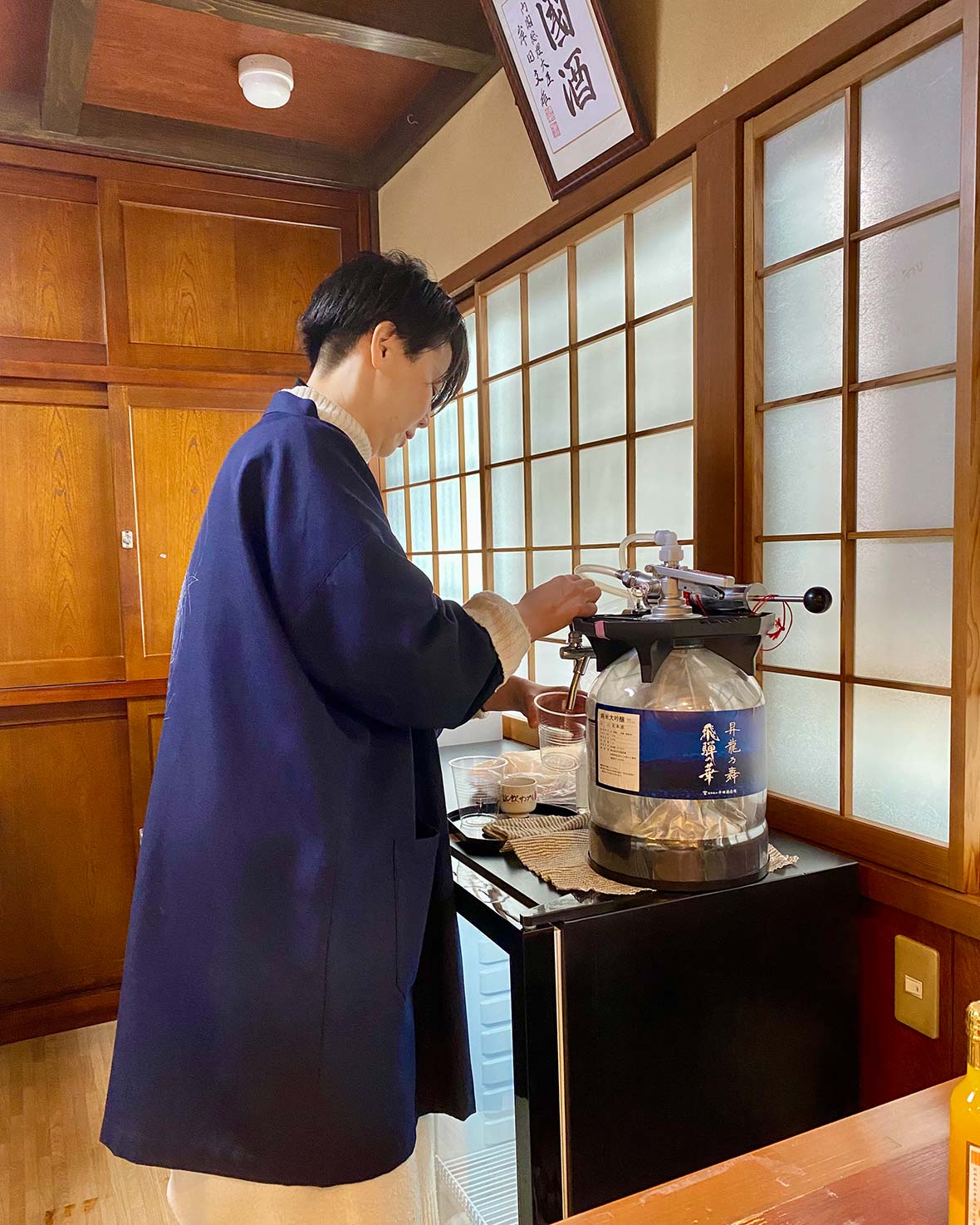
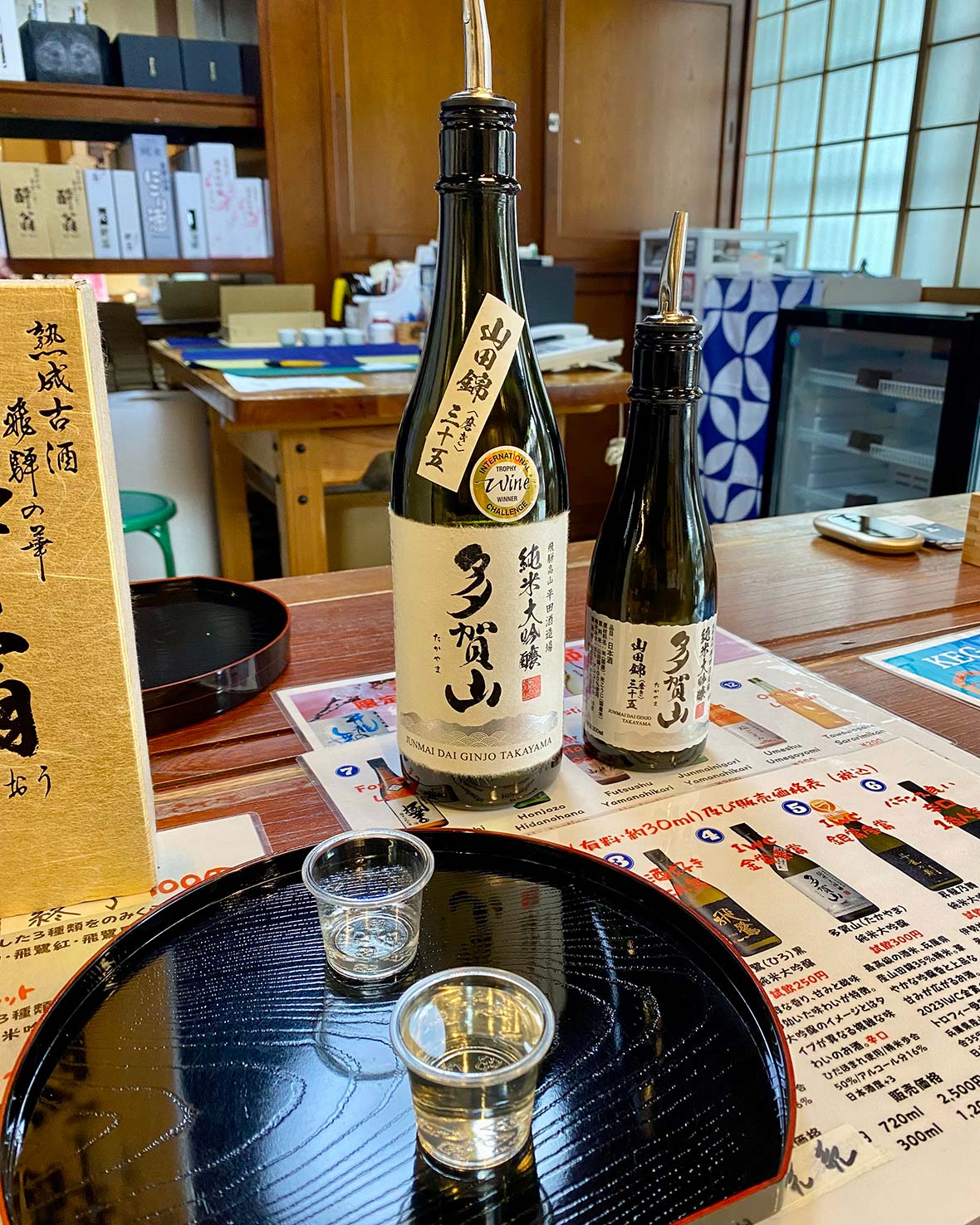
“Usually, only brewers get to enjoy the fresh sake,” she replied in not so many words. Thanks to this novel draft system, “Now everyone can,” she added with enthusiasm. “A special treat.”
It was fruity, cloudy, and effervescent, almost like sake-flavored soda. Compared to the subtler sake I also ordered, including junmai daiginjo—the highest grade of sake, reserved for those made from at least 50% polished rice, which yields a cleaner and more aromatic drink—it was a riot of flavor.
I didn’t have to go far for my next round. Niki, a 330-year-old brewery that burned down 120 years ago and was rebuilt according to its original drawings, was two doors down.
On one hand, Niki was a living history lesson. Its spacious interior featured a dirt floor, thick timber beams and a water well that once supported the brewery. But this being modern Japan, it also had an automated self-pour machine. Plunk in a 100-yen coin, and you’d get a 50ml shot of their ginjo, cold-fermented sake witha high polished rate. It may have been hands-off, but this DIY arrangement allowed me to appreciate the character, design and legacy of the operation on my terms.

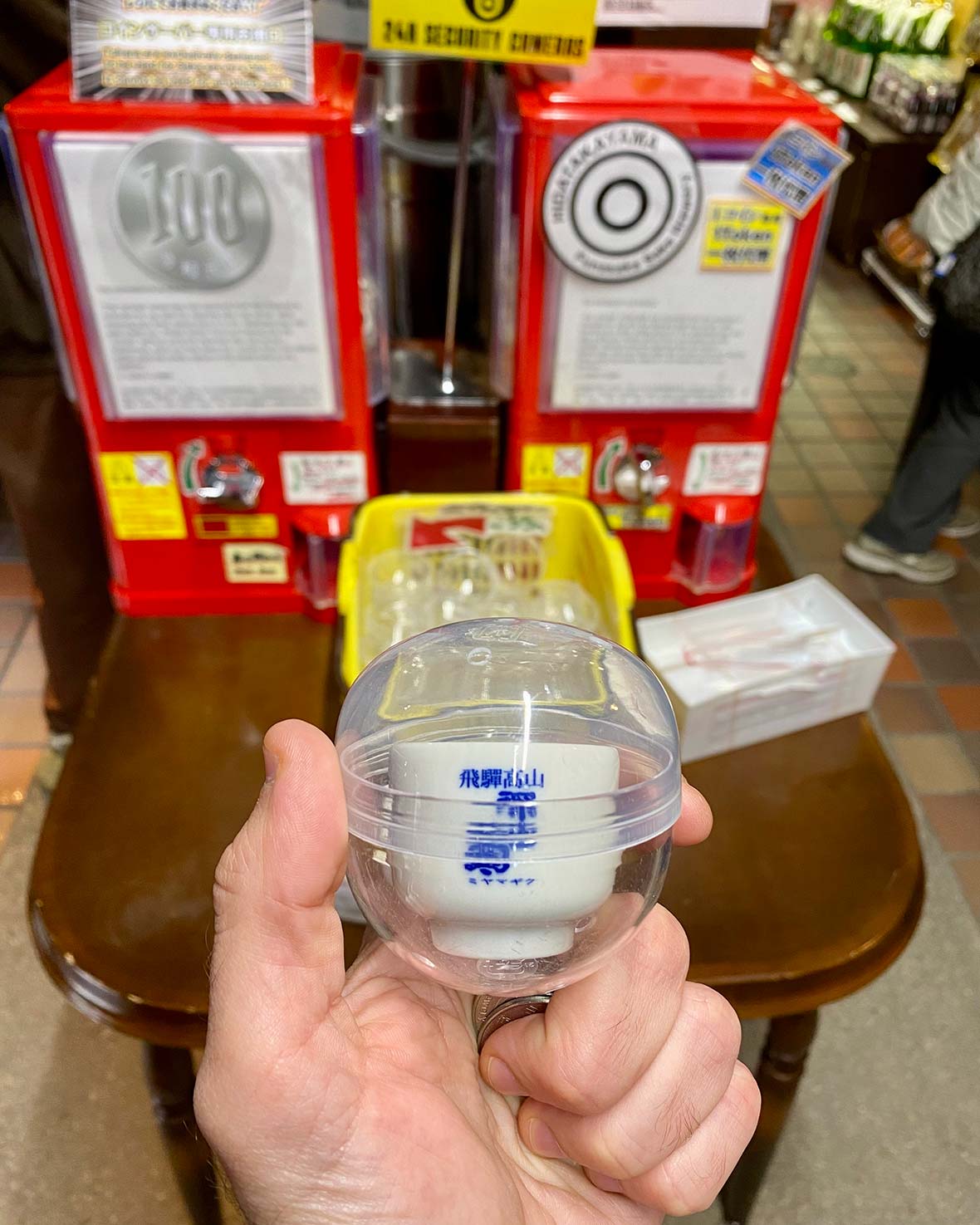
Less than a minute after leaving Niki, I was inside Kawashiri, trying some of the extremely limited 700 liters the brewery makes each year. Then I swayed up the street to Funasaka where I bought a souvenir cup from a vending machine to sample its more modern offerings, including yuzu and wild grape sake.
Harada was closed, so I glided over to Hirase. The shop wisely cautioned restraint but less wisely allowed customers to pour their samplers from bottles in a fridge.
How anyone could come to Takayama and leave standing straight was beyond me. Let alone leave without having fallen madly in love with it.
Family-run ryokan are everywhere. The morning markets expose you to local delicacies like miso grilled on hoba (magnolia) leaves, charcoal-grilled sweetfish and marbled Hida beef. Pilgrim trails lead to temples and castle ruins in forests that demand you respect the forces of nature. And at every turn, you can picture how the town looked in a relatively recent past that has been steamrolled elsewhere.
The word “magical” gets thrown around too often when describing destinations that have retained their heritage or sense of place. But in Takayama’s case, the word applies. It doesn’t take a day of serious drinking to realize it, either.
